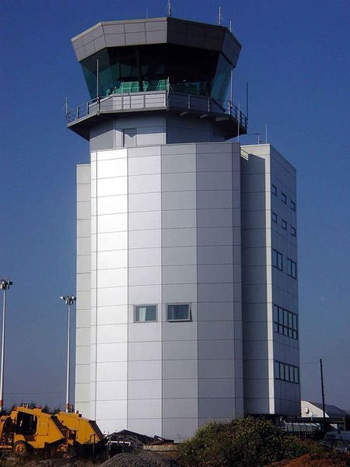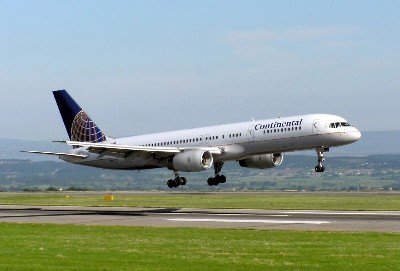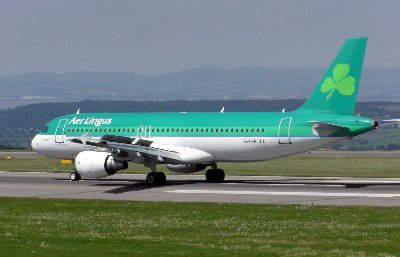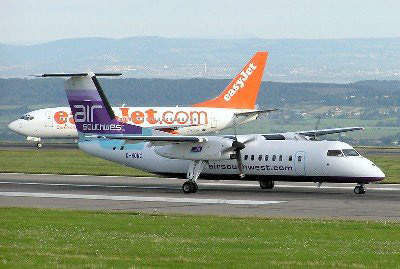Bristol International Airport (BIA) has been one of the UK’s major airports in the south-west since in was opened in 1957 as Bristol Lulsgate Airport.
The airport has been through much refurbishment since then and passenger numbers steadily increased to the 2006 levels of 5.25 million a year with 85,000 aircraft movements. This was largely due to the activities of the low-cost carriers EasyJet and GO Fly. In addition, in September 2004, Continental Airlines announced its intention to launch a direct service to New York (Newark) from Bristol, to begin using Boeing 757s from May 2005.
The airport is now owned by Cintra and Macquarie Bank who purchased it from First Group and Bristol City Council in 2001 for £189m. A new terminal building was built in April 1999 and opened in March 2000. The airport has a single 2,000m asphalt runway and is operated by Southwest Airports Ltd.
Building work is now underway on a new £7m expansion project at Bristol International Airport (despite objections from the environmental lobby).
Passenger facilities at the airport are being overhauled as part of the expansion, enabling passengers to pass through the airport more quickly and offering them more leisure and retail choices.
The security area is being enlarged in a bid to speed-up the security screening process at the airport. New X-ray gates are being installed; while there will also be more space for baggage searches. The number of duty free shops and restaurants in the departure area will also be doubled as part of the project.
Bristol Airport master plan 2006–2030
The government says passenger numbers flying from Bristol will almost double to eight million a year by 2015.
Because of these projections airport bosses want to expand the terminal, increase parking facilities and build a new 120-bed hotel. The plans would create an estimated 1,500 new jobs.
Many environmental groups (including Bristol Friends of the Earth (FoE), the Campaign for the Protection of Rural England and the Parish Councils’ Airport Association) have objected to the expansion and a ‘Stop Bristol Airport Expansion’ campaign has also been launched to fight the proposals.
The airport says it has no plans to lengthen the runway or increase night flights. Managing director Andrew Skipp said: “I think the implications will be less than people expect. The government has already consulted on the balance between the environment and the economy. They have realised that the economic benefits outweigh the environmental problems.”
Finally, the government’s white paper on the future of aviation secured Bristol International’s status as the ‘airport for the south west’. It estimates that the airport could expect to handle 12 million passengers by 2030, requiring a longer runway extended towards Felton Common and a second terminal on the other side of the runway.
Bristol International Airport was ‘invited to bring forward, as soon as possible, a long-term master plan setting out these proposals to be accompanied by a voluntary purchase scheme for any properties that would be adversely affected’.
In October 2005 the airport announced an £80m five-year plan to further extend the terminal, build a new fire-station and fuel store, multi-storey car parks, a hotel and more aircraft stands, but again with no significant runway extension, to cater for nine million passengers in 2015. This scheme would involve the demolition of the old terminal, tower and fire station near the A38.
Runway resurfacing work completed
Bristol’s runway resurfacing work was completed in April 2007, to schedule and on budget. The £17m project has not been without its problems – temporary surfacing work did not allow water to drain properly from the runway surface causing problems for planes when landing, and massive disruption in early January 2007 when flights had to be relocated to Cardiff Airport.
The £17m project began in October 2006, and a total of 168,000 man-hours were worked during the construction phase. During this time the airport’s contractor, Lagan Construction operated from a permanent base to the south of the airfield, working during the night to cause minimum disruption to flight schedules.
Over 50,000t of asphalt was laid to create the new surface, into which 80,000 grooves have been cut to assist water drainage and increase friction grip for landing aircraft. The main surface itself was completed just before Easter, with work on taxiways and ancillary work on drainage, lighting and instrument landing systems taking place over the last three weeks. This work was completed, on time, for the start of the busy summer season in May 2007.
Tony Hallwood, aviation development director at Bristol International, said, “The resurfaced runway is part of the ongoing investment we are making in this airport’s infrastructure to enable us to continue serving both business and leisure travellers across the south west region. The night closures of the runway to enable resurfacing work to be carried out have now been discontinued, and the airport has returned to normal operating hours.”
Rearrangements
In 2006 the GA (general aviation) terminal was relocated from the north side next to the control tower, to a purpose-built facility on the south east corner of the field.
There are two GA organisations based at Bristol. All GA handling for visiting aircraft is managed by Bristol Flying Centre, which also provides pilot training and engineering services. Bristol & Wessex Aeroplane Club, which is based next to the Bristol Flying Centre, provides pilot training on both fixed-wing aircraft and helicopters.
In 2005, a bungalow extension to the terminal building opened to allow additional check-outs. June 2002 saw the opening of the new £800,000 domestic baggage reclaim hall, with two baggage belts and a new baggage carousel; also the new £800,000 covered walkway, which provides weatherproof cover to six aircraft stands opened to the public in December 2002. Completion of the new £3.5m control tower and the category 3 landing system (which required diversion of the A38 main
road) was in 2001.
Planning application for development and enhancement
BIA submitted a planning application to North Somerset Council on 16 June 2009 for the development and enhancement of the airport. The plan includes expansion of the existing terminal to increase and double its overall floor area for housing more security channels and check-in-desks. It will also have an enlarged departure lounge and arrivals area.
Also planned is a new public transport interchange. It will be located atop a multistorey car park, with covered pedestrian access linking them both to the terminal. New walkways and air bridges will now give passengers direct access to aircraft. This reduces the need for passengers to use buses to board and disembark flights.
The plan includes several design changes suggested by local people. The plan focuses on development while aiming to reduce and mitigate the environmental effects. One of the environmental mitigation measures included was to set up an airport environmental improvement fund with BIA.
The airport will maintain CO2 emissions at or below 2007 levels. And 20% of the additional energy required by the proposed development will come from on-site renewable sources.
Passenger terminal expansion
The existing terminal will be extended to the east and west. This will double the size of the building and deliver increased capacity at immigration and security.
Aircraft parking and air bridges
As additional space is required, the existing apron will be extended to the east and west areas to accommodate the aircraft.
Two new air bridges will serve the extended aprons. This will enable
passengers to walk between aircraft and the terminal building and reduce the use of buses to board and disembark flights.
Public transport, parking and fuel storage
New car parking facilities will be developed, concentrating mainly on the north side of the airport, while a new public transport interchange will provide pick and drop off facilities convenient for buses and coaches.
A new underground storage facility for aviation fuel will be located
in the north-west corner of the long-stay car park.
Office building
Office space to be used by airport and airline staff will be located to the east of the existing control tower.







